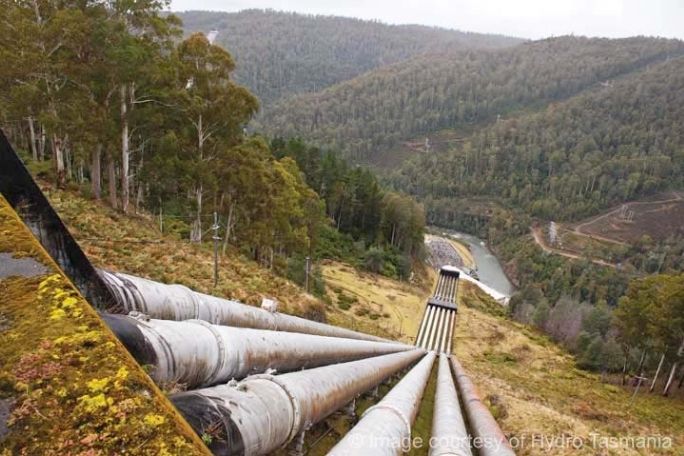Lesson summary
Students will learn about the operation of a hydroelectricity generating system. They will explore the mechanical effects of water and make links between mechanical and electrical energy effects. They will also translate the substance of an informative text into diagrammatic form.
Learning intentions:
Students will...
- develop knowledge about energy generating infrastructure operated in Tasmania.
- synthesise facts and draw conclusions that are consistent with evidence.
- apply their knowledge and skills to answer comprehension questions about key facts.
- transfer written text to diagrammatic text.
Lesson guides and printables
Curriculum links
Select your curriculum from the options below.
Lesson details
Curriculum mapping
Australian Curriculum content descriptions:
Year 9 Science:
- Use knowledge of scientific concepts to draw conclusions that are consistent with evidence (ACSIS170).
Year 10 Science:
- Critically analyse the validity of information in secondary sources and evaluate the approaches used to solve problems (ACSIS206).
Syllabus Outcomes: SC5-7WS, SC5-8WS.
Time required: 60 mins.
Level of teacher scaffolding: Medium – oversee activity.
Resources required
- Internet access, Student Worksheet (one copy per student
- OR computers/tablets to access the online worksheet)
- Hydroelectricity 101 – Resource Sheet
Additional info
This lesson has been developed in partnership with
Hydro Tasmania.
Hydro Tasmania has been at the forefront of clean energy innovation for one hundred years. It is Australia’s largest producer of clean energy – generating hydro and wind power – and the largest water manager. Hydro Tasmania has 55 major dams, operates 30 hydropower stations and has built some of Australia’s largest wind farms.
Hydro Tasmania also sells energy in the National Electricity Market through its retail business Momentum Energy, and sells its expertise internationally through its consulting business Entura.
Visit the Hydro Tasmania website to learn how the business is working towards Australia’s clean energy future.


Welcome back!
Don't have an account yet?
Log in with:
Create your free Cool.org account.
Many of our resources are free, with an option to upgrade to Cool+ for premium content.
Already have an account?
Sign up with:
By signing up you accept Cool.org's Terms and Conditions(Opens in new tab) and Privacy Policy(Opens in new tab).